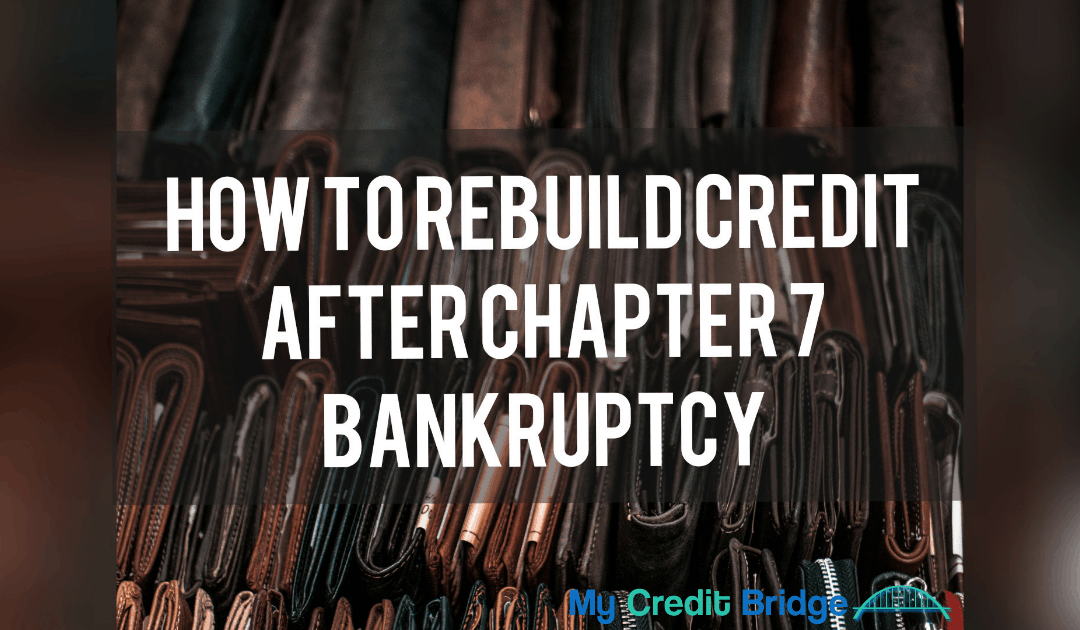Rebuild and Restore After Chapter 7 Bankruptcy
It may be hard for many to believe but it is possible to rebuild credit after you have filed a chapter 7 bankruptcy. It’s not so much different from building credit period. The same strategy applies.
Of course, if you are filing for bankruptcy your credit is probably in bad shape already. Chapter 7 bankruptcy is the most common of them all. It is considered a liquidation bankruptcy.
The debtor is not obligated to make any future payments. Specifically related to the nonexempt assets owned by the debtor and included in the bankruptcy.
If the debtor wants to keep an item then they will be held responsible to continue to make payments for that item. This can be a car or a home.
If they decide they do not want the item, they will have to return that item to the creditor that holds the lien.
What will my credit score be after filing Chapter 7?
After filing a chapter 7 bankruptcy your credit may not be as bad as you think. It really depends on your credit history. If you have closed accounts that have a good payment history, and/or any open loans or credit cards that survived the bankruptcy, you could have a good or fair score.
If not, your score probably is poor or bad. Without any positive credit accounts, whether they are closed or open, your score will be in the 400-550 range. That’s not good, just in case you were wondering.
Post Chapter 7 Bankruptcy Pregame Steps
After the filing and discharge of the bankruptcy, you will need to create a budget for yourself ASAP. It is very easy to find a budget plan online through google, youtube or bing.
Generally speaking, you will need to look at your bank statements and see all of your monthly expenses. Then subtract them from your monthly income to find out how much money is leftover.
Then identify any expenses you can eliminate to increase your left-over income. Then use the excess money to create an emergency fund.
Depending on where you live, I would aim for at least a 2-month worth of expenses fund. This would include expenses such as rent/mortgage, utilities, food, cell phone, and the internet, and any other monthly expenses.
Once you have the emergency fund covered, you can move on to the credit rebuilding process. Rebuilding your credit after a chapter 7 bankruptcy is not much different than building credit in general.
The extra hurdle is having the bankruptcy on your report. However, the good news is that you no longer owe any debt.
Step #1 Get Your Credit Report
Now that you are ready to really get started, you must get a copy of your credit report to see what the damage is. Be sure to get a 3-In-1 credit report with the scores. You can use a company like Smart Credit to get a free copy of all 3 credit reports and scores.
Once you have your credit reports you can review all three from each bureau and look for inaccuracies. Almost 80% of credit reports contain errors. You will definitely find some errors on your credit reports and you can dispute all of them.
Step #2 Audit Your Credit Report
As you scan for errors on your report you will need to keep a log of the items on the credit report to dispute. You will need a credit report audit checklist to make sure you leave no stone unturned.
This can make the difference when it comes to improving your credit profile and scores. Be sure to create a credit report checklist before you start disputing so you can keep track of your activities and items.
You need to know what to look for on your credit reports. Here’s what should be included in your checklist, look for errors with:
- Name and Addresses
- Employer
- Year of Birth
- Inquiries
- Account Name
- Account Number
- Account Type
- Account Status
- Date Opened
- Balance
- Limit
- Payment Status
There’s more, but that should give you plenty to start with. It’s very important you get this done so you can start disputing the inaccurate items or information with the credit bureaus and/or creditors.
Dispute Any Inaccurate Information
Any inaccurate information you find you can dispute. It is your right to dispute any erroneous information in your credit report. Please review the Fair Credit Reporting Act to get familiar with your rights as a consumer.
Disputing is your best plan of action to improve your credit report. You can dispute your personal information, account information, or inquiries on your credit report. There are two ways to dispute. One, you can use a credit monitoring service to dispute online. Your second option is what I recommend: mailing in letter disputes.
The main reason you should mail in your disputes to the credit bureaus is that electronic/online disputing has limitations. Online services usually will give you the dispute reason and do not allow you to type in a more complex dispute.
I have used up to 4 reasons for disputing one item, online electronic disputing does not allow you that liberty. Also, the more reasons you can add to a dispute for each inaccurate item, the better your chances of getting it removed or updated.
Build New Credit
Since you have filed for a chapter 7 bankruptcy, it’s safe to say you will have little to no open or current credit accounts. It is imperative that you start working on building your credit immediately.
There are a few ways to make this happen. You can add an authorized user account, become a co-signer, apply for secured credit cards, or get a personal loan. Most banks carry them and offer them to assist with credit building.
Authorized User Accounts
Authorized user accounts are the best way to add positive credit to your credit report and improve your scores quickly. It usually takes less than a month for the authorized user account to report to your credit profile.
An authorized user account is a credit card you are added to for the purpose of improving your credit payment history, credit utilization and length of credit history primarily.
To learn more about authorized user accounts you can review a previous blog post, “How Authorized User Accounts Improve Credit”.
Co-signing
Another way to build credit is becoming a co-signer. You can get a friend or family member to add you on to their car or home loan. This will have their monthly payments report to your credit reports and improve your credit.
This improves your payment history and length of credit history over time. It’s an option you can use if you do not have money to secure a credit card or loan.
Secured Credit Card
Secured credit cards are a great way to start building credit after your chapter 7 bankruptcy has been discharged. It’s literally for consumers that are either building or rebuilding their credit.
A secured credit card is a credit card that is backed by your cash. Most secured cards require at least a $200-$300 deposit. Whatever your deposit is, that’s your credit limit.
Usually, you can request your money back and have the secured card converted to an unsecured credit card. This can take anywhere from six months to a year, depending on your payment history.
Build Credit With Loans
Another great resource for building credit is a loan service called Self Lender. This company allows you to choose the amount of money you can pay each month, and reports all the payments you make.
When you reach your goal amount of payments, they will give you the money you paid each month, minus a service fee and small interest percentage. It’s a great way to build credit and save money at the same time.
Rinse and Repeat
Each month, all you have to do is rinse and repeat the process.
- Check credit reports and scores
- Check for inaccurate information
- Dispute inaccurate information
- Try to add an authorized user account or become a co-signer
- Build credit by opening a new credit card and loan account
- Pay your new credit cards or loans on time each month
It’s that simple. You have to be determined and disciplined to complete the tasks and achieve your goal of creditworthiness.
To learn more about building credit you should check out previous Credit Talk Blogs:



